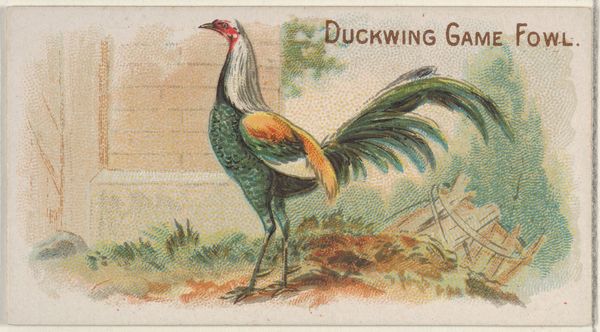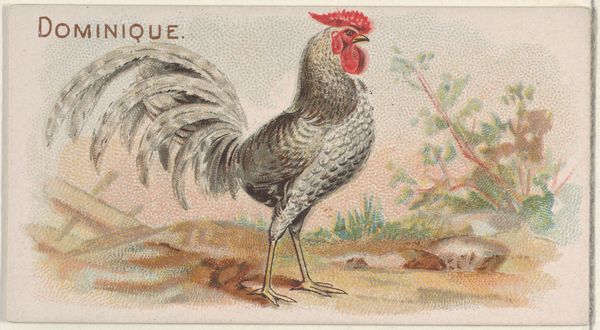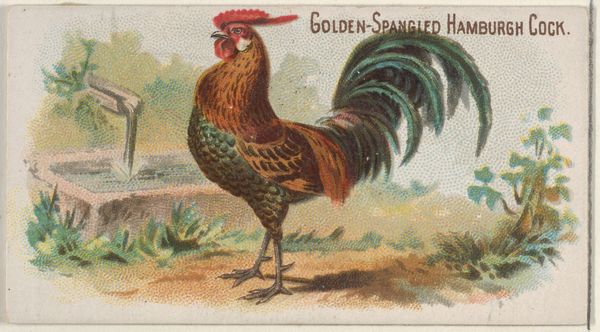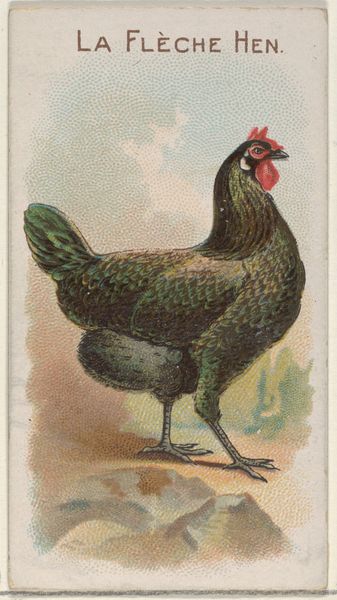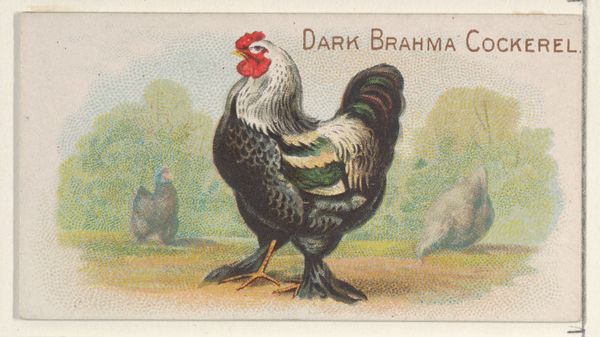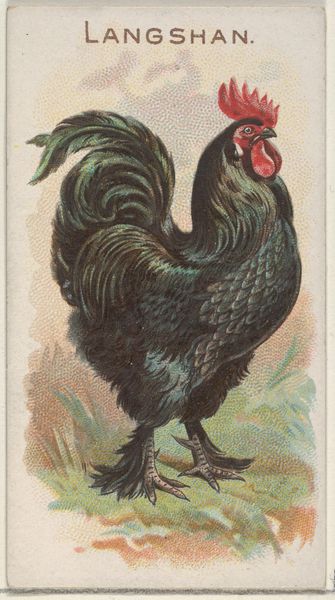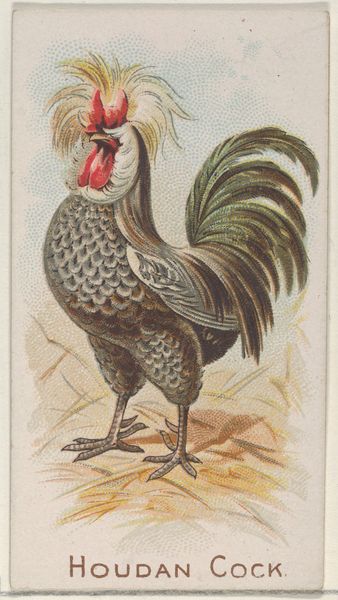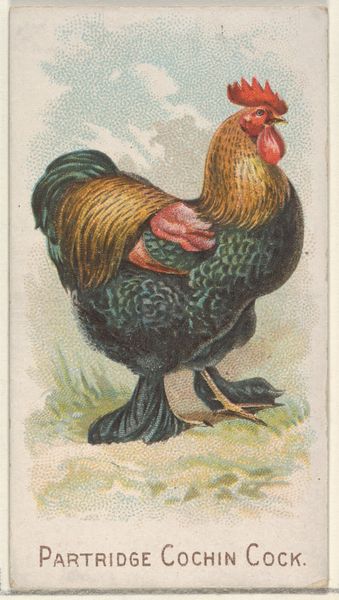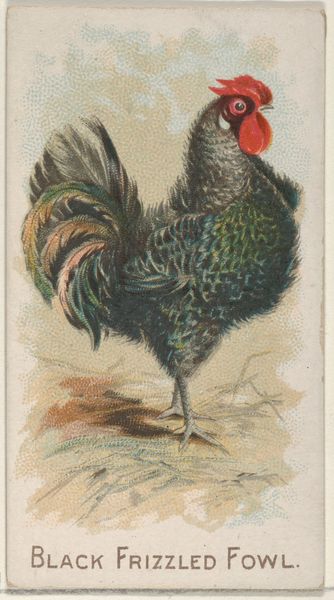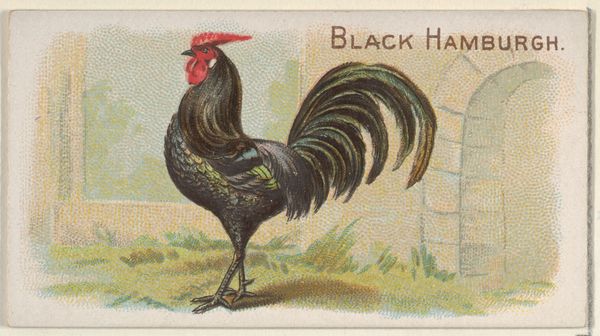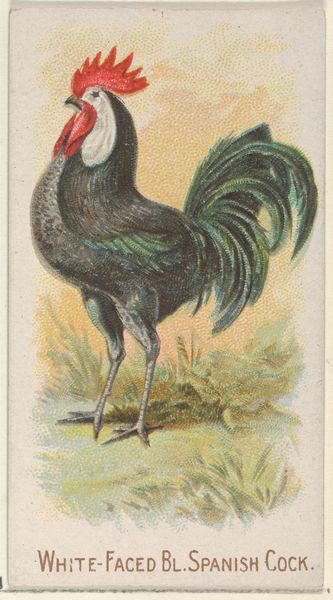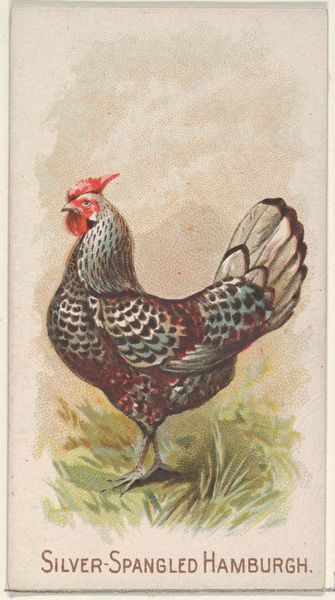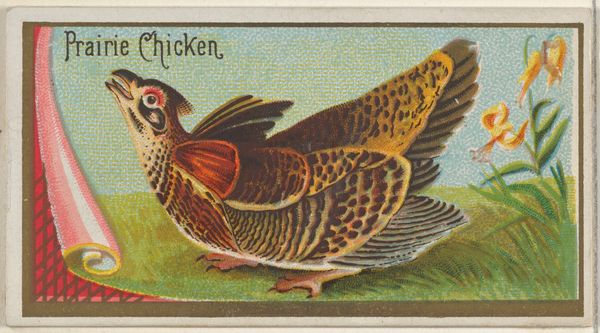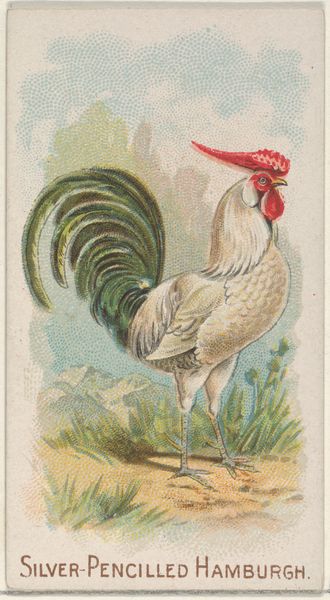
Rose-Combed Dorking Cock, from the Prize and Game Chickens series (N20) for Allen & Ginter Cigarettes 1891
0:00
0:00
drawing, coloured-pencil, print
#
portrait
#
drawing
#
coloured-pencil
# print
#
coloured pencil
#
genre-painting
#
academic-art
Dimensions: Sheet: 1 1/2 x 2 3/4 in. (3.8 x 7 cm)
Copyright: Public Domain
Curator: What a dapper fellow. The Allen & Ginter company, better known for their cigarettes, included this “Rose-Combed Dorking Cock” card in their "Prize and Game Chickens" series around 1891. It’s currently held at the Metropolitan Museum of Art. Editor: He does have a certain air of…authority, doesn't he? It's beautifully rendered, with those feathery details in coloured pencil, so meticulously capturing the texture of his plumage. It has an almost photographic quality, this intense realism, and makes the bird feel…monumental. Curator: Precisely. These cards, and the others in their series, played a subtle but important role. At the time, there was a rising middle class in America that wanted to feel…cultivated, connected to tradition. Images like this suggested a sort of bucolic gentility, presenting a connection to rural life that may not have been very accurate. Editor: I see that tension between reality and image playing out. On the one hand, it seems simply celebratory—this idealization of animal breeds, the very picture of proud domesticity. But you also get a sense that it is about a specific, controlled environment, an echo of the selective breeding practices of the time, of defining 'prize' specimens. Curator: Indeed, and that's where the social and institutional forces start coming into play. Allen & Ginter aimed to capture this spirit through collectible sets, reflecting the national fascination with…ordering the natural world, aligning it with the new American vision of industry and progress. In its imagery, there's more there than what first catches the eye. Editor: Absolutely. These seemingly innocuous portraits served as social texts, reinforcing values related to wealth, leisure, and idealized rural existence. They carry, within them, powerful ideas about who gets to be deemed worthy. The art’s accessibility and wide circulation meant these visual concepts infiltrated the public’s mind. Curator: I agree completely. Examining images such as this allows us a portal to study those bygone times. Editor: It shows us the culture—or cultural aspirations, more precisely—and how values and ideals are spread through visuals. Thank you for expanding the scope of this beautiful animal study and guiding my view through culture and history!
Comments
No comments
Be the first to comment and join the conversation on the ultimate creative platform.
